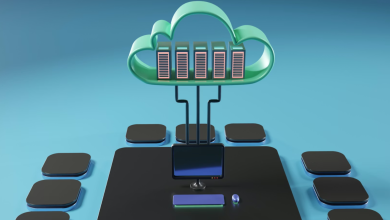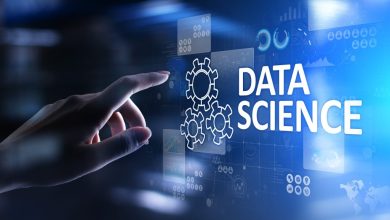
These days, everything in AI revolves around powerful language models. Every new release zerobreaks new ground in what is possible. But instead of chasing the scale, more teams are focusing on specialization. They’re breaking down those giant systems into smaller, more focused models, which are built and tuned for a specific purpose.
This shift, often called the “unbundling” of the LLM, is changing how companies think about AI altogether. Micro-models and fine-tuned systems are faster, cheaper, and easier to adapt to real-world needs. In other words, we’re moving from the age of general intelligence to the age of useful intelligence. Let’s dive deeper, why AI reshaping is important and what its practical use is in software development.
Importance of the LLM Unbundling for Decision-Makers
In most organizations today, AI is moving from experimentation to a permanent role in product and engineering strategy. The rise of cloud LLMs has helped millions of professionals integrate AI into their daily tasks—from problem-solving to development support. It introduces new challenges, such as rising cloud spend, loss of data control, and limited ability to align AI with company-specific processes.
As a result, more organizations are exploring local models, tailoring them to their own needs. This brings intelligence closer to the product—locally, securely, and within a defined domain. In regulated environments and settings with sensitive data, including education, this is a growing part of risk management, compliance, and cost optimization.
Large general-purpose models are powerful, but they rarely fit corporate reality. Every company has its own development rules, internal systems, security requirements, terminology, and quality standards. A universal model trained on “the entire internet” does not understand those nuances and cannot guarantee the right output in a specific domain.
In real workflows of code review automation, vulnerability analysis, and handling sensitive data, general-purpose models quickly hit privacy and compliance constraints. For many organizations, sending source code and product information outside of the perimeter is unacceptable. The choice becomes clear: refuse AI benefits, or bring the technology inside.
How Micro-Models Change the Game
Micro-models change that calculus. They win not through sheer size, but by doing exactly the job required—on your content, processes, and context. That reduces sources of error, lowers the risk of data leakage, and significantly decreases the chance of security policy violations. The model stops “hallucinating” on irrelevant topics and focuses on tasks that matter to the business.
Fine-tuning lets teams adapt a micro-model to their own practices: code in the team’s style, internal quality rules, and product terminology. Output becomes predictable and controllable: instead of a generic assistant “from the street,” you get an AI tool embedded in existing engineering practices—without transferring corporate know-how externally.
Micro-models also don’t have to live in isolation. A hybrid approach—local models for narrow tasks, cloud models for exceptional or complex cases—creates a scalable, cost-effective architecture. With orchestration and agents, each model handles its part, and the system works for a specific product rather than abstract scenarios.
When Micro-Models Make Business Sense
Local LLMs tend to deliver the most value when two or more of the following apply:
-
- Strict privacy requirements for code and data.
- A well-defined domain or specific documented processes.
- Material scaling costs when relying on cloud LLMs.
- Offline operation needs.
- High cost of errors and a need for predictable output.
In these scenarios, general-purpose LLMs stop being the optimal tool, and domain-specific local AI takes a competitive advantage.
Practical Use in Software Development
Micro-models are already producing measurable impact in engineering workflows:
- Code and test generation — helps automate routine development work, shorten delivery time, and let engineers focus on higher-value contributions.
- Code review assistants — models trained on internal quality rules reduce senior load and accelerate feature releases.
- DevSecOps and anomaly detection — local models surface vulnerabilities and potential incidents without sending data outside the perimeter.
As a result, intelligence runs closer to the product, minimizing cost and risk, and making AI scalable inside the company—not only through cloud services.
Use Cases in the EdTech Industry
In education, micro-models are used to reduce the workload on teachers and instructional designers while improving learning quality:
- Exam question generation — automates test creation and reduces time to prepare assessment materials.
- Open-answer evaluation — speeds up and clarifies knowledge assessment with escalation to the instructor when needed.
- Course material auditing — checks content against curriculum requirements and competency frameworks.
Local deployment preserves the privacy of student data, and adapting models to specific teaching practices makes assessment more consistent and transparent.
Strategic Conclusion
The shift from general-purpose LLMs to micro-models is not an experiment—it is the next step in enterprise AI strategy. If organizations do not adapt to market realities, AI remains an external function with high total cost. Costs grow faster than value.
A micro-model strategy enables organizations to:
- deploy AI closer to the product and concrete workflows;
- reduce dependence on cloud and variable at-scale costs;
- build security and privacy into the architecture;
- align models with the team’s experience and the business domain.
Teams planning to use AI in critical development or training processes should decide now which functions must be local and domain-specific, and which can be delegated to general-purpose cloud models.
AI should be embedded in the product and its processes—not left as an external service. Micro-models make that transformation manageable, secure, and economically beneficial.
External Insights
The corporate AI market is shifting toward local models and agents as companies seek to reduce cloud dependency and retain control over intellectual property.
This is especially visible where data and processes cannot be exposed publicly.
In regulated industries, including education, the demand is growing for domain-specific solutions that can be adapted to specific processes and deployed securely within the enterprise environment.
Relevant Sources
Numbers vary by source, but most place the industrial AI market above $40B already — and still growing quickly. https://iot-analytics.com/industrial-ai-market-insights-how-ai-is-transforming-manufacturing/
A lot of enterprise leaders we follow are voicing the same idea: smaller, domain-specific models are simply easier to run, govern, and trust.
https://venturebeat.com/ai/metas-new-small-reasoning-model-shows-industry-shift-toward-tiny-ai-for




